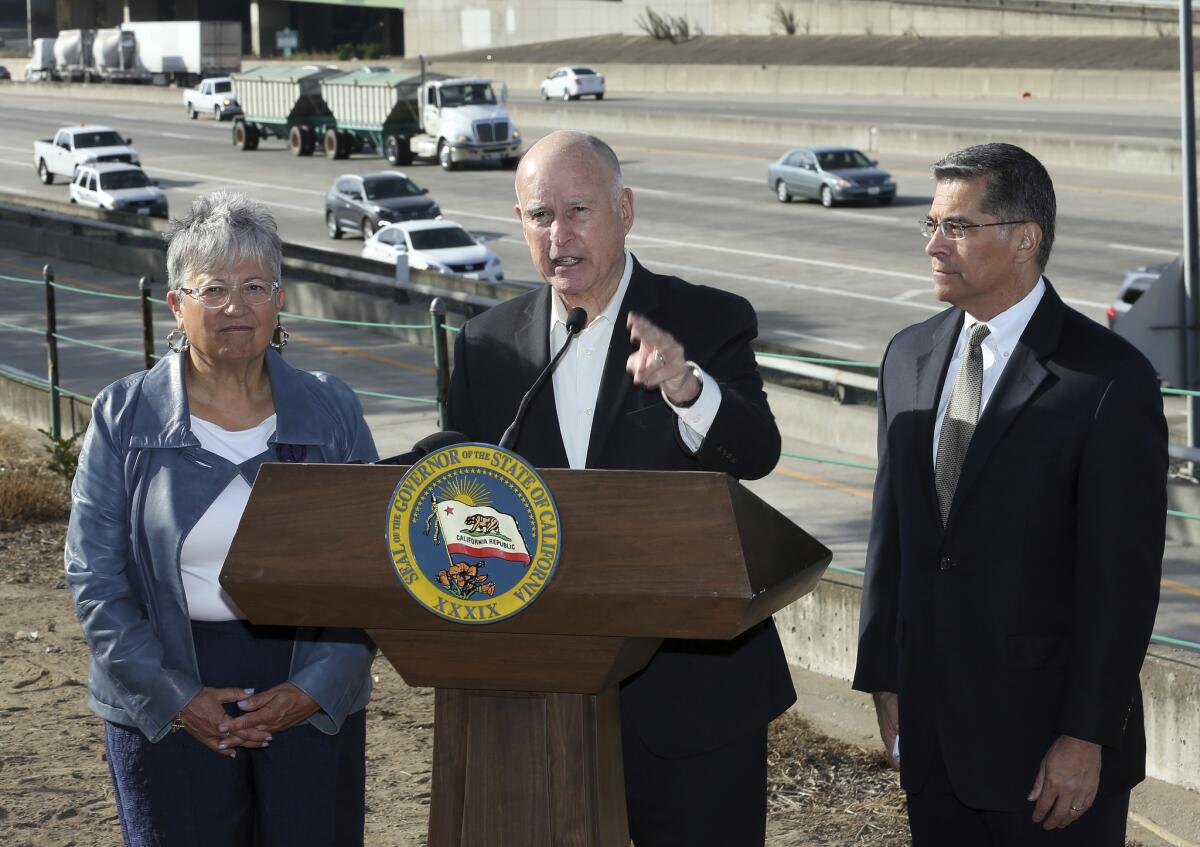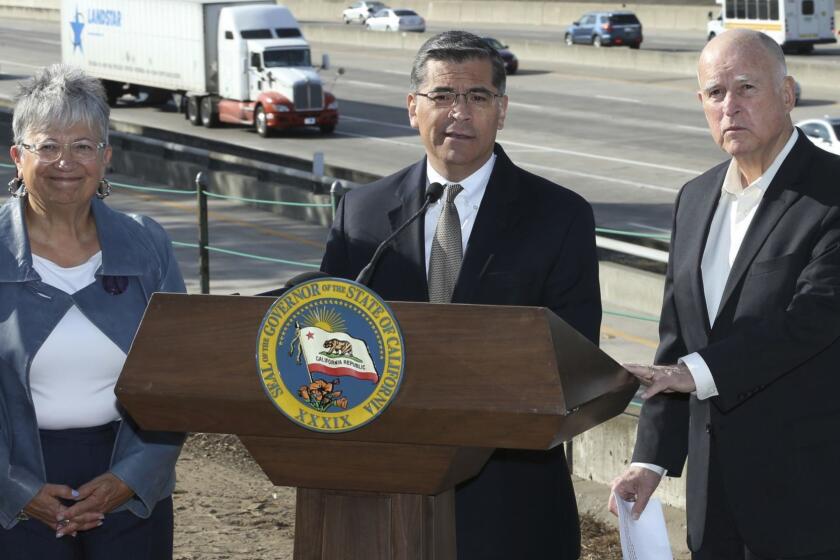Column: Amid an epidemic, Trump is still making decisions that could kill people

- Share via
President Trump’s somber tone when he projected a death toll from the coronavirus as large as 240,000 at his daily press briefing Tuesday had many in the media thinking that he finally came to grips with the scale of the crisis.
They must have forgotten the cardinal rule, when it comes to presidents, of paying attention to what they do, not what they say. In just the last day, Trump has taken steps that could bring health problems, even death, to millions of Americans.
The administration finalized a rollback of auto emissions and mileage standards that will mean dirtier air nationwide, a spur to climate change, and potentially tens of thousands of premature deaths over the next few decades.
Many more will be uninsured ... [because] of ideological hatred of the ACA.
— Joan Alker, Georgetown University
The same day, Trump refused to reopen the federal exchange for Affordable Care Act insurance policies, healthcare.gov, so that uninsured low-income Americans could sign up for coverage now.
That keeps the door shut for many of the 30 million Americans still living without health coverage, at a time when that coverage is more important for their health and public safety than ever before.
Even the health insurance industry — which would face heightened costs from covering people newly joining up outside the annual open enrollment window — endorsed the reopening.
“Given the risk posed by COVID-19,” the industry lobby, AHIP, said in a March 19 letter to congressional leaders, “it is more important than ever for people to have health coverage. This will give people the opportunity to get the security and peace of mind that healthcare coverage provides.” COVID-19 is the disease caused by the pandemic novel coronavirus.
President Trump’s hype of a potential treatment for COVID-19 gives false hope to virus patients and causes real harm to others.
For weeks, the administration had held out the prospect of reopening enrollment via healthcare.gov. The refusal was widely decried by healthcare experts, who say that the lack of coverage may interfere with people’s willingness to seek testing and treatment of COVID-19.
“This is absolutely terrible news if this decision holds,” tweeted Joan Alker, director of the Georgetown University Center for Children and Families. Alker noted that many of the 38 states that rely on healthcare.gov as their Affordable Care Act enrollment portal have also refused to expand Medicaid under the ACA.
In those states, Alker observed, “with unemployment on the rise the options for public coverage for adults are very limited. Many more will be uninsured ... [because] of ideological hatred of the ACA.”
Individuals can still enroll in ACA plans through healthcare.gov if they experience one of a prescribed set of life-changing events. Among them are the loss of employer-sponsored insurance because of a layoff, furlough or other reason; the birth or adoption of a child; marriage; and relocation to another state. Others must wait until the annual open enrollment period, which generally occurs in November and December.
Among the District of Columbia and 12 states that run their own ACA exchanges, all but Idaho have reopened enrollment to accept the uninsured during the crisis. California, for example, has reopened enrollment through its Covered California exchange through June 30, with coverage beginning on the first day of the month after enrollment.
Enrollment will be open to any state residents who meet the eligibility requirements, which encompass lawful state residents regardless of their immigration status; premium subsidies are also available to those who qualify based on their income.
California’s special enrollment period is the longest in the country. Most of the other 11 states’ reopened enrollment periods end in April.
There was a fair amount of perplexity at the California Air Resources Board on Feb. 21, when the Trump administration abruptly announced that it had decided to “discontinue discussions” with the state’s air quality regulator over the administration’s proposal to gut federal auto emissions standards.
The Trump administration didn’t give a reason for its decision, which was first reported by Politico. But it’s consistent with its deeply held hostility to the Affordable Care Act. The administration continues to support a lawsuit brought by Texas and other red states aimed at declaring the entire act unconstitutional.
Although the legal theory underlying the case has been ridiculed by legal experts across the ideological spectrum, arguments on the lawsuit will be heard by the Supreme Court, probably later this year.
The administration’s initiative on auto emissions is another ill-considered step, though that would be true even in the absence of a pandemic.
As my colleagues Anna M. Phillips and Russ Mitchell report, the rule made final Tuesday reduces the mandate on automakers to increase fuel economy across their fleets from 5% annually by 2025 to 1.5% annually by 2026. The new rule’s goal of an average 40 miles per gallon is a sharp retreat from the original rule’s 54 mpg goal.
Some 900 million more tons of carbon dioxide are expected to be released under the new rule than under the previous Obama-era standards.
The administration justified its rule change with statistics that have been conclusively debunked by experts. It also designed the change as a direct challenge to California’s leadership in auto emissions regulation, which has been followed by a dozen other states and supported by BMW, Volkswagen, Ford and Honda.
But this is a healthcare disaster caused by a political swipe. A study published by the Environmental Defense Fund forecasts premature mortality through 2050 for as many as 32,000 people living in the U.S., along with 4 million respiratory cases.
More to Read
Inside the business of entertainment
The Wide Shot brings you news, analysis and insights on everything from streaming wars to production — and what it all means for the future.
You may occasionally receive promotional content from the Los Angeles Times.













